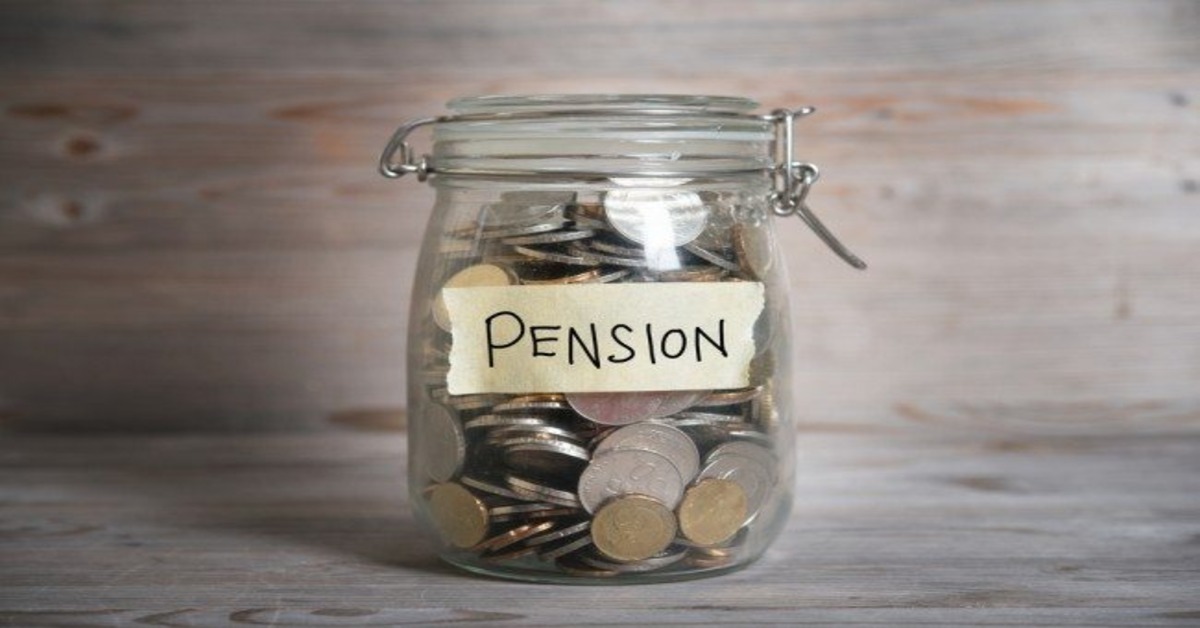Start a Private Pension: A Guide to Securing Your Financial Future
Table of Contents
- What is a pension?
- What is a private pension?
- Types of private pensions available
- Who should consider getting a private pension?
- Benefits of a private pension
- Drawbacks of private pensions
- Starting a private pension
- When to start saving in a private pension
- How much to save in a private pension
- Maximum savings limits in private pensions
- Accessing a private pension
- Early access to pension funds
- Private pension at retirement
- Alternatives to private pensions
Saving for retirement is a crucial aspect of financial planning. Pensions are a popular way to save for retirement, but the options can be overwhelming. This article aims to simplify the topic of private pensions and provide a clear understanding of the different types of pensions available, their benefits, drawbacks, and how to go about starting one.
A pension is a savings plan designed to provide an income in retirement. A private pension is a pension plan that is not provided by an employer. There are several types of private pensions available, including personal pensions, self-invested personal pensions (SIPPs), and stakeholder pensions.
Anyone who wants to save for retirement should consider getting a private pension, especially those who are self-employed or do not have access to a workplace pension scheme. The benefits of a private pension include tax relief on contributions, which increases the overall savings pot, and the potential for investment growth.
However, there are also drawbacks to private pensions, such as fees and charges, and the risk that investments may not perform as expected. It is important to carefully consider these factors before starting a private pension.
Starting a private pension is relatively straightforward. Individuals can choose a provider and plan that meets their needs and budget. It is recommended to start saving as early as possible and to contribute regularly to maximize the potential for investment growth.
The amount to save in a private pension varies depending on individual circumstances and retirement goals. There are also maximum savings limits in private pensions, which should be taken into consideration.
Accessing a private pension is typically allowed at age 55, but early access may be possible in certain circumstances. It is important to carefully consider the options and potential tax implications before accessing pension funds.
At retirement, the private pension can be used to provide an income in retirement. Alternatives to private pensions include other savings and investment plans, such as ISAs and property investment.
In conclusion, private pensions are a valuable tool for retirement planning. By understanding the different types of pensions available, their benefits, drawbacks, and how to start one, individuals can make informed decisions about their retirement savings.
What is a Pension?
A pension is a long-term savings plan designed to help individuals grow their funds for retirement and old age. The government provides tax relief on contributions made to pensions, which boosts overall savings.
There are three main types of pensions: state pensions, workplace or occupational pensions, and private pensions.
The state pension is a benefit paid by the government to those who qualify. To receive the full state pension of £203.85 a week (for those reaching state pension age after April 2016), an individual must have 35 years of qualifying National Insurance contributions. At least 10 years of contributions are required to receive any state pension.
Workplace or occupational pensions are group pension schemes that employees pay into through their pay or monthly salary. In most cases, the employer also contributes to the plan, and workers receive tax relief. Employers must auto-enroll eligible staff into a pension if they are over the age of 21 and earning at least £10,000 a year. However, employees can opt-out of auto-enrollment.
Private pensions work similarly to defined contribution workplace pensions, where the amount an individual receives is dependent on what they pay in and the investment performance of their plan. However, private pensions are not set up by an employer and can be opened by an individual themselves.
The majority of company or workplace schemes are defined contribution plans, where the amount received upon retirement is dependent on how much the individual paid in and the investment performance of the pension fund, minus any fund charges. Some older occupational pensions are defined benefit schemes, also known as final salary or career-average plans. With this type of scheme, the amount received in retirement is dependent on the individual’s salary level when they retire and length of service with the company, not investment performance.
According to government data from the Office for National Statistics (ONS) in 2021, 25.4% of employees in the private sector did not have a pension, compared to just 8.7% of workers in the public sector.
Research by the Pensions and Lifetime Savings Association (PLSA) shows private savings in workplace and personal pensions account for 42% of the total wealth held by UK households. The median amount people have saved in private pension savings, including occupational and workplace schemes as well as personal pensions, is £57,000 on average across all ages.
What is a Private Pension?
A private pension, also known as a personal pension, is a type of long-term savings plan where individuals invest money to build a retirement fund. The money invested in a private pension is usually allocated to stocks and shares, primarily through collective funds, with the aim of generating higher returns than those of cash savings over the long term.
Unlike workplace pensions, private pensions do not receive contributions from employers. However, investors still receive tax relief on their contributions based on their highest tax rate. Basic rate taxpayers receive 20% tax relief, while higher rate taxpayers receive 40% and additional rate taxpayers receive 45%.
Overall, a private pension can provide a reliable source of income during retirement, helping individuals meet their financial needs and maintain their standard of living.
What types of private pension are available?
Private pensions are available in different types, depending on the level of investment control and charges. Stakeholder-style personal pensions are simple investment plans with low charges, low minimum contributions, and a limited range of investment fund choices. These plans are offered by a wide range of investment platforms, life insurance, and pension companies.
On the other hand, a self-invested personal pension (SIPP) allows investors to have full control over their investment decisions. SIPPs can hold a wide variety of assets, such as individual stocks and shares, investment funds, commercial property, and land. Investment platforms and asset management companies offer SIPPs, but some may have high minimum investment levels, and the platform and trading charges are likely to be higher than with a standard personal pension.
Investors should carefully consider their investment goals, risk tolerance, and charges before choosing a private pension plan.
Who Should Consider Getting a Private Pension?
A private pension plan is an excellent option for anyone who wants to save more for their retirement. It is especially important for individuals who are self-employed or do not have a pension scheme through their employer. According to government statistics on pension saving, the number of people making individual contributions to personal pensions increased by 7% to 7.5 million in the tax year 2021 to 2022. The number of self-employed individuals making contributions reached 340,000.
Jon Greer, head of retirement policy at wealth manager Quilter, suggests that while auto-enrolment has made it easier for most employees to start saving into a workplace scheme, individuals who are already in a workplace scheme may also choose to save into a private scheme or increase their contributions into that scheme for ease. However, the self-employed do not have that luxury and need to take matters into their own hands.
The self-employed should habitually save into a personal pension. Whether an individual is self-employed or a small business owner, a private or personal pension can serve as a valuable tool to build a nest egg for retirement. It is essential to note that self-employed incomes can be lumpy, and locking money into a pension may feel daunting when the money is needed here and now. However, making regular contributions to a private pension plan can help individuals build up their savings over time.
In conclusion, a private pension plan is an excellent option for anyone who wants to save for their retirement, especially those who are self-employed or do not have a pension scheme through their employer. Making regular contributions to a private pension plan can help individuals build up their savings over time and provide a valuable tool to build a nest egg for retirement.
What are the Benefits of a Private Pension?
Tax Benefits
Private pensions offer tax benefits that depend on the pension saver’s income tax rate. Basic rate taxpayers receive 20% tax relief on contributions, while higher rate taxpayers receive 40%, and additional rate taxpayers receive 45%. Contributions made by non-taxpayers are usually eligible for tax relief at the basic rate of 20%.
Open to All
Private pensions are accessible to everyone, regardless of their employment status or whether they are taxpayers. Contributions made by non-taxpayers are also eligible for tax relief at the basic rate of 20%. Private pensions allow for contributions to be stopped and resumed as needed, and the amount paid in can be varied.
Potential for Higher Growth
Pension contributions earn interest and returns that are reinvested into the pot, leading to compounding and a significant increase in overall pension savings.
Limited Access
The money in a private pension is generally inaccessible until the age of 55, which is viewed as an attractive feature as it removes the temptation to withdraw funds, unlike other types of investments.
Cash Lump Sum
Private pension investors have the option to take 25% of their total pension pot as a tax-free lump sum at retirement.
Flexible Options at Retirement
Private pension savers have a range of options at retirement age, including taking the entire pot as cash, receiving a regular income, keeping the money invested, or continuing to save. They can also choose a combination of these options.
What are the drawbacks of private pensions?
Private pensions have some potential drawbacks that individuals should consider before investing in them. One of the main drawbacks is that private pensions do not offer employer contributions like most workplace or occupational pensions. Additionally, private pension schemes tend to have charges, which can also be found in other investment plans such as stocks and shares ISAs.
Another potential downside of private pensions is the cap on tax relief, which applies to all pension contributions, including those made into workplace and private pensions/SIPPs. The current cap on tax relief is set at £60,000 of contributions (2023-24) or 100% of an individual’s income if they earn less than £60,000 per year. This can be a disadvantage for higher net worth individuals or those looking to maximize their pension savings.
It is important to carefully consider these drawbacks before investing in a private pension, as they can impact an individual’s retirement savings.
How to Start a Private Pension
Before starting a private pension, employees should check if their workplace offers any pension schemes. Opting out of a workplace pension means missing out on free cash from the employer’s contribution. It is possible to have both a workplace pension and a private pension, but the maximum tax relief and contribution limits apply to the combined pension savings.
When looking for a private pension, individuals should consider whether they want a low-cost savings plan with investment decisions made on their behalf, or a self-invested personal pension where they can make their own investment decisions. It is important to shop around and compare investment options and charges from different pension providers.
Deciding on the monthly contribution amount is the next step. Most private pensions can be opened online and set up with a standing order for contributions.
It is crucial to regularly review pension savings to ensure they are on track for retirement. Depending on the private pension scheme, individuals may be able to switch investment funds and vary the contribution amount.
There should be no advertising language in the article, only clear and neutral information. By following these steps, individuals can confidently and knowledgeably start a private pension to secure their financial future.
When to Start Saving in a Private Pension
Starting pension savings early can provide a longer time frame to build up a more sizable pension pot. It is important to balance pension saving with paying off debts, such as student loans, and saving towards a first property, if that is an ambition. However, it is recommended that pension saving should not be put off for too long. Even saving small amounts each month can add up over time.
According to Alistair McQueen, head of savings and retirement at private pension provider Aviva, retirees often wish they had started pension saving earlier. Saving a little over a longer time should set one up well for eventual retirement. It is never too late to start pension saving. Every penny saved today is a penny to spend later in life. And this penny saved, when invested, should grow in value while one waits.
To help individuals plan their pension savings, Aviva provides a pension calculator that estimates how much money one may need for retirement and how much they should save each month to achieve that goal. The calculator also takes into account factors such as current age, retirement age, and desired retirement income.
In summary, starting pension savings early is recommended to build up a sizable pension pot over time. It is never too late to start pension saving, as every penny saved today can grow in value while one waits. Aviva provides a pension calculator to help individuals plan their pension savings.
How much should I save in a private pension?
Determining how much to save in a private pension depends on several factors. It is essential to consider the lifestyle one wants to have during retirement, the amount of money that can be saved after paying essential bills, and the number of years left until retirement.
According to independent research conducted by the Pensions and Lifetime Savings Association (PLSA), relying solely on the state pension is insufficient to meet even the minimum living standard recommended by the PLSA. Therefore, most people will need to contribute more than the auto-enrolment minimum of 8% of salary to achieve a comfortable retirement.
To achieve a ‘moderate’ lifestyle in retirement, which is currently estimated at £23,300 a year for a single person, an individual would need approximately £330,000 in their pension pot to purchase an annuity that provides that level of income.
To determine how much to save, individuals can use online pension saving calculators based on their age and retirement goals. It is crucial to regularly review the pension pot against retirement plans and fill in gaps when possible.
It is worth noting that the PLSA offers independent research that can provide valuable information on pension savings and their impact on future standard of living. Armed with this information, individuals can make informed decisions about their retirement goals and the amount they need to save.
In summary, determining how much to save in a private pension requires careful consideration of several factors. Regularly reviewing the pension pot against retirement plans and filling in gaps when possible is essential. By using independent research and online calculators, individuals can make informed decisions and achieve a comfortable retirement.
What are the Maximum Savings Limits in Private Pensions?
Private pensions offer a tax-efficient way to save for retirement, but there are limits on the amount of tax relief you can get on your contributions each year. The maximum level of total pension contributions that qualifies for tax relief is £60,000 per tax year (2023-24) or 100% of your income if you earn less than £60,000 a year. This means that you can save as much as you want into pensions, but you can only get tax relief up to a certain limit.
There is no longer a maximum limit on the amount you can save into a pension, which was previously known as the lifetime limit. However, once your pension pot reaches a total value of £1,073,100, higher tax rates apply when you come to withdraw your money at retirement. For pensions above this maximum limit and taken after April 2023, savers will pay income tax on some or all of the lump sum from their pension.
It is important to seek independent advice before making any decisions that may affect your contributions and annual allowance. It is recommended to work with your accountant and financial advisor to find the best outcome for your situation.
In summary, the maximum savings limits in private pensions are determined by the maximum level of total pension contributions that qualify for tax relief and the maximum value of a pension pot before higher tax rates apply. It is important to seek professional advice to make informed decisions about your pension contributions.
When Can Savers Access Their Private Pensions?
Savers in private pensions have been able to access their retirement funds from the age of 55 since April 2015. However, it is important to note that the minimum age will rise to 57 by 2028. It is recommended to leave investments to grow for longer, as accessing pension savings earlier may result in smaller lump sums and income. Waiting longer is likely to lead to more money in retirement.
Can I access my pension funds early?
Normally, pension savings cannot be accessed before the age of 55. However, in certain circumstances, such as a terminal or serious illness, early access may be granted. It is important to note that pensions are designed to be untouched until retirement.
What Happens with My Private Pension at Retirement?
When savers and investors with private or personal pensions reach retirement, they have several options available to them. One option is to leave their money invested in the pot to access later. By doing so, they could potentially end up with a better income at a later date.
Another option is to take 25% of the total pot as a tax-free lump sum and then use the rest to buy an annuity. An annuity is a financial product that provides a fixed income for the rest of the retiree’s life, regardless of how long they live. There are different types of annuities, including those for couples or those with index-linked payments. It is important to note that annuity income is taxable.
Drawdown is another option for retirees. This involves accessing the money saved in the fund at different times to suit their needs while keeping the rest invested in the plan. Retirees can take their 25% cash lump sum and leave the rest invested, for example.
Retirees can also choose to take the entire pension as cash, either immediately or in stages. However, only the first 25% is tax-free, and the rest of the pension will be taxed as income.
It is important to consider all of the available options and consult with a financial advisor before making any decisions about what to do with a private pension at retirement.
Alternatives to Private Pensions
While private pensions are a popular choice for retirement savings, some individuals opt for other financial products. One such alternative is an Individual Savings Account (ISA). ISAs offer greater flexibility, as savers can access their money at any time. However, pensions generally provide better tax relief.
Investors seeking greater control over their investment decisions may consider a Self-Invested Personal Pension (SIPP) or a stocks and shares ISA. Both of these options allow for greater control over investment decisions compared to stakeholder private pensions. However, annual management and platform charges typically apply for pensions and investment ISAs.
It is recommended that savers have a combination of different financial products, including pensions, ISAs, and other cash savings and investments, to spread out the risk. Different products may suit different savings needs and goals at different times. While the annual ISA limit is much smaller than the amount that can be saved in a pension, savers can still invest up to £20,000 a year in an ISA.
Some alternatives to pensions include the Lifetime ISA and Investment ISAs. The Lifetime ISA is a tax-free savings plan designed to help individuals aged 18-40 save for a first home or retirement. The annual savings limit is £4,000, and the government pays a 25% bonus on savings, up to a maximum of £1,000 per year. Those using a Lifetime ISA for retirement planning can access the money from age 60. Investment ISAs are tax-efficient investment wrappers that allow investors to put up to £20,000 a year into an ISA. The funds are invested in stocks and shares and investment funds, such as unit and investment trusts. Savers can choose to self-select their own investments through an online platform or opt for a ‘ready made’ stocks and shares ISA plan from an investment provider.









